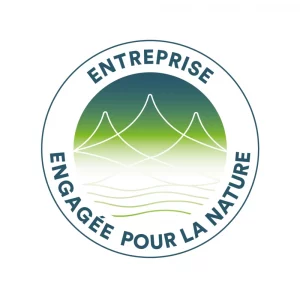The ISO 14001 process and requirements
Field of application
The scope of our environmental and biodiversity initiatives is as follows:
- Design, development and operation of inert waste storage and recycling sites.
- Development and enhancement of natural areas and industrial wasteland.
It includes :
- Management,
- the Operations department and sites in operation,
- the Development department,
- the Planning department,
- the Communication/Marketing department,
- the Quality department,
- R&D
- and the HR, Administration and Finance department.
Environment, biodiversity and safety policy
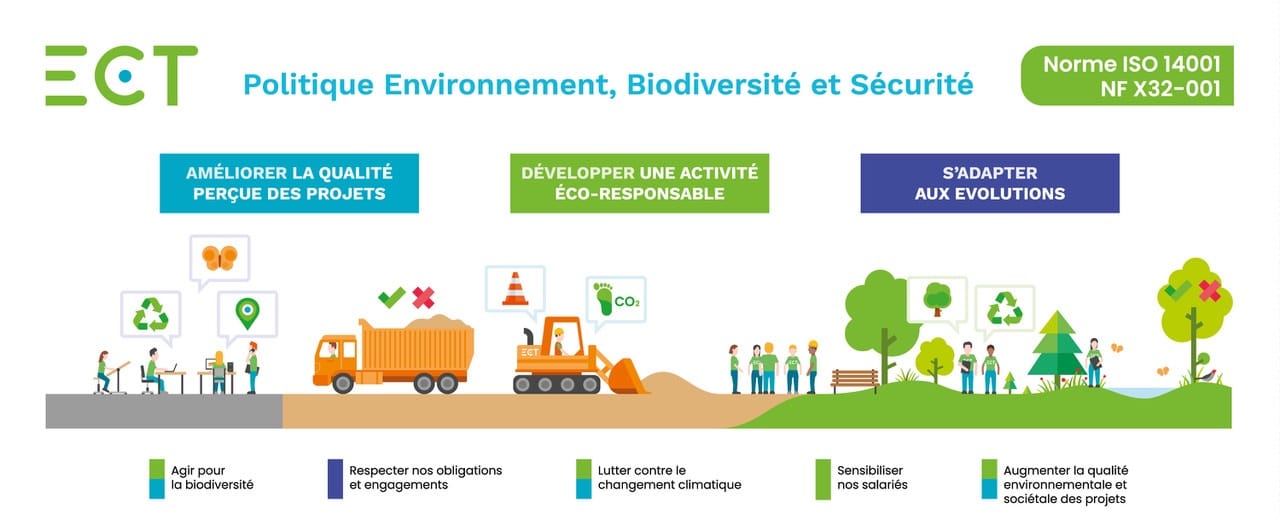
ECT's business is to reclaim and reuse excavated soil from construction and public works sites for non-built and environmental development projects. ECT takes a proactive approach to transforming derelict sites.
Our ISO 14001 environmental management system has been certified since 2011, and our biodiversity approach follows the methodology of the NF X32-001 standard.
Our projects are developed with respect for the history of the sites and with a view to creating and restoring natural environments.
Our approach to biodiversity generates specific objectives that are translated into an action plan compatible with our strategic direction.
We design sustainable projects and deploy eco-responsible actions to limit our ecological footprint. The circular economy principle for excavated soil implemented by ECT encourages short circuits between excavation sites and our development sites.
We are also particularly attentive to the impact of our activity on the quality of life of local residents.
We adapt our activities to contextual and regulatory changes, and respect our compliance obligations as well as the commitments specific to each project.
As an integral part of our approach, we implement high safety standards at our sites to protect our employees, transporters, external contractors and local residents.
We support and guide all our stakeholders so that they contribute to the effectiveness of our overall Environment, Biodiversity and Safety policy.
The success and operational implementation of this approach require the commitment of all the company's employees, and the active support of managers and all employees, with a view to continuous improvement and optimizing our performance.
February 2023 - Laurent Mogno, President of ECT
Our ISO 14001 environmental management system has been certified since 2011.
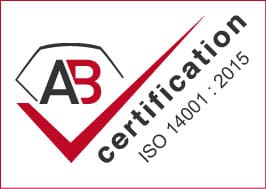
Certificat n° A 0 5384
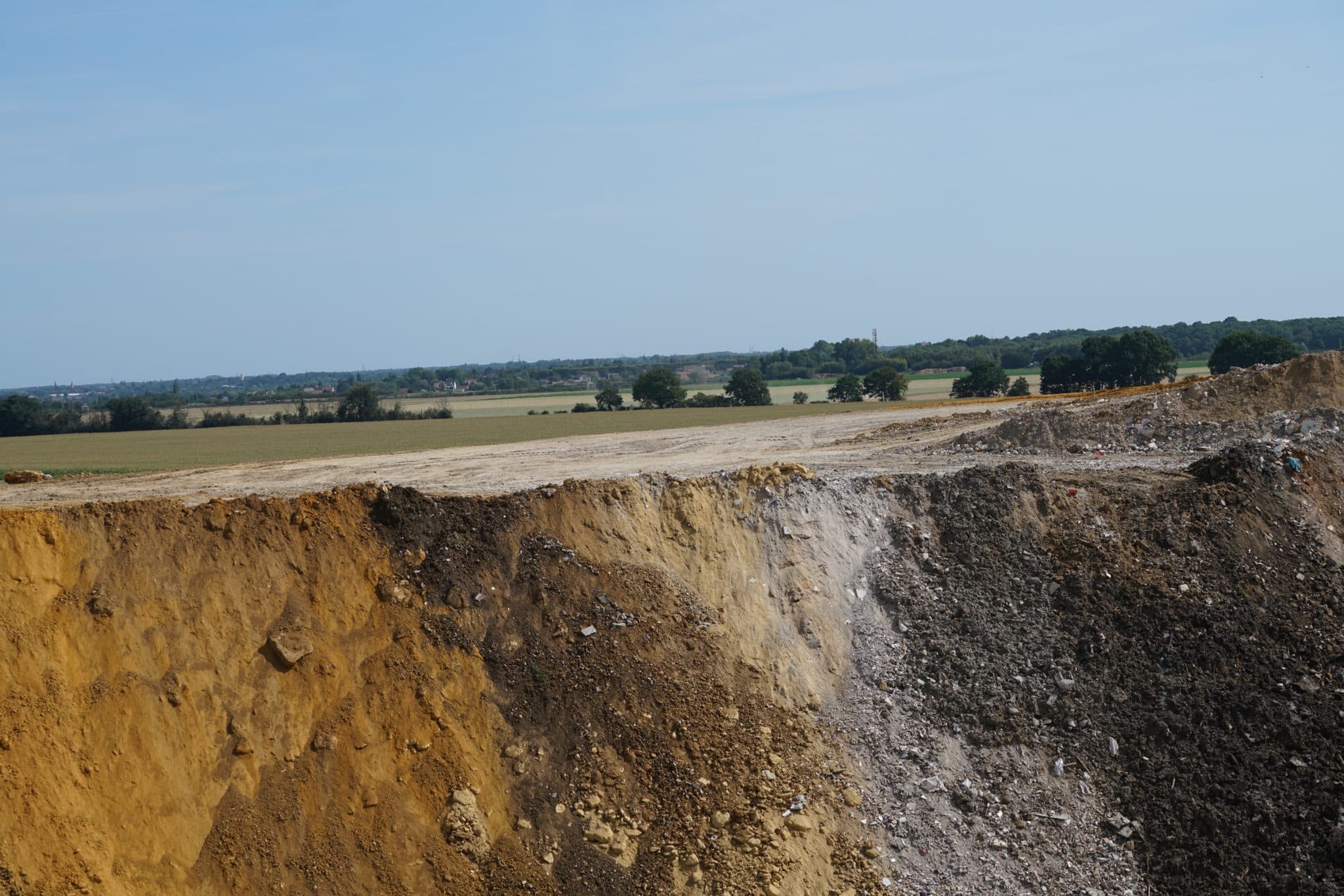
The ISO 14001 environmental policy and management system govern the actions of ECT teams, from the management and use of excavated soil to the design and development of projects. ©AM Filaire
Biodiversity standard NF X32-001
Biodiversity analysis and issues
In order to study the context of this new approach, we examined our sphere of influence, the controversies linked to our activities, the anticipated impacts with regard to the 5 factors of biodiversity erosion, as well as the various approaches already in place and linked to biodiversity (charter and methodology resulting from our partnership with Humanité et Biodiversité, implementation of environmental quality indicators for projects).
We have formalized our various biodiversity challenges at every level of the value chain, identifying the dependence of our activities on ecosystem services and the impact of our activities on the factors driving biodiversity erosion.
Among the 5 main factors of erosion, ECT can have an impact on the destruction and fragmentation of habitats and natural environments, water and air pollution, the presence of invasive alien species and climate change. However, ECT is not concerned by the over-exploitation of resources (hunting, fishing, wood, water, etc.) and is working to preserve/restore "soil" resources.
Our biodiversity issues are an integral part of our environmental challenges.
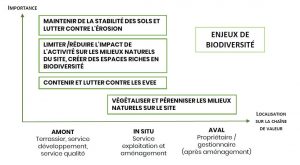
Standard X32-001 - Biodiversity issues defined by ECT for biodiversity management in the design and development of its sites
Ambitions, objectives and action plan
In order to formalize our biodiversity strategy, ECT has defined ambitions that respond precisely to each issue.
As a result, ECT has established biodiversity objectives that will guide our action plan.
The action plan translates these SMART objectives into concrete action, with indicators and 3-year targets.
Each objective is broken down into several actions to achieve our targets within the set timeframe. Implementation began in January 2023.
In March 2023, the company was awarded the "Entreprise engagée pour la Nature" label for its commitment to the environment, based on the NF X32-001 standard.
